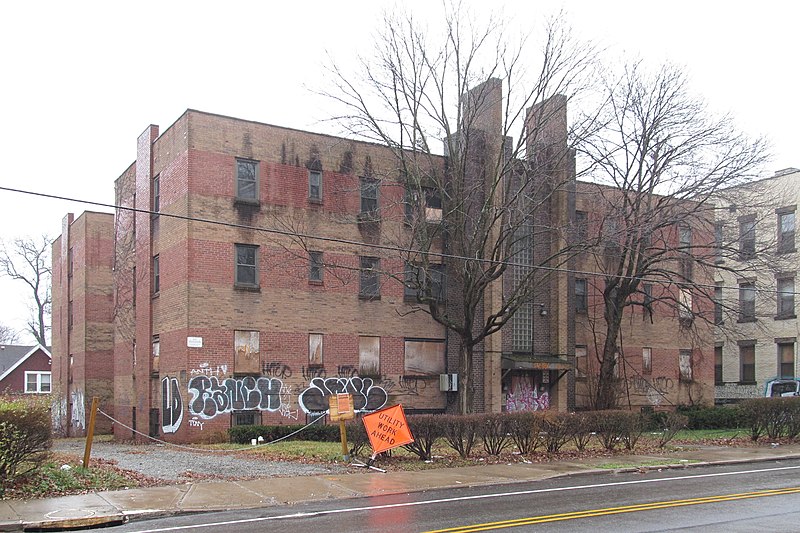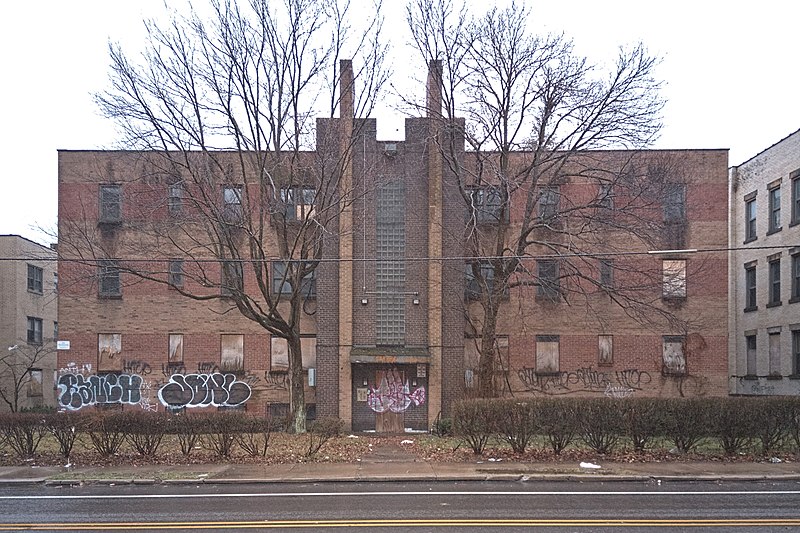
-
Three and Two Gateway Center
-
United Steelworkers Building (IBM Building)

The diamond grid is not an ornamental facing: it holds up the building, along with a central core. “Diagrid construction” is a little more common today, but still fairly unusual; perhaps the most famous or notorious example of it is the Gherkin in London. This was a very early example. It was finished in 1964, and although it was originally built for IBM, it fits its current owner very well: its steel grid is a good demonstration of what steelworkers are capable of. The architects were the New Orleans firm of Curtis and Davis.

-
One Oliver Plaza

This is not Father Pitt’s favorite building downtown, but it was one of the last works of a distinguished modern architect: William Lescaze, who died in 1969, the year after One Oliver Plaza was built. The building has had several names since then; it now goes by the name K&L Gates Center. Old Pa Pitt’s friend Dr. Boli has remarked that the names at the tops of the skyscrapers are a good index of who is most ruthlessly exploiting the masses at the moment. K&L Gates is a gigantic law firm.
-
Software Engineering Institute
-
Art Deco Apartment Building, East Liberty

Art Deco is not very common in Pittsburgh, although there were a few Art Deco apartment buildings in the East End. Here is one on Negley Avenue that probably will not be with us much longer; it looks as though it is scheduled to be replaced. It is a late Art Deco style; old Pa Pitt would guess it dates from the 1950s. Most of the building is just a modernist block, but the horizontal stripes give it more than average decorative flair, and the vertical forms of the entrance lift it into the realm of Art Deco.

-
Oakland from Across the River

Views of central Oakland from the South Sides Slopes across the Monongahela. Above, the Cathedral of Learning and Litchfield Towers A, B, and C, or—as they have been known since they sprouted on the Oakland skyline—Ajax, Bab-O, and Comet.

A closer view of the Litchfield Towers.

The Cathedral of Learning and its neighborhood.

-
Regina Coeli Church and School, Manchester

Now the New Zion Baptist Church in what may be Pittsburgh’s only clot of three different Baptist churches in the same spot, this former Italian parish church is a good example of the modernist interpretation of Gothic that was popular briefly after the Second World War. The fine reliefs are in a style that filters medieval religious art through a slightly Art Deco lens.



There seems to have been an inscription over the skull and crossbones (representing conquered Death), but it is no longer legible.

Sinite parvulos, et nolite eos prohibere ad me venire: talium est enim regnum caelorum. (Matt. 19:14.)

-
151 First Side
-
Gateway Center

The Point was mostly a run-down warehouse district after the Second World War, which made it an ideal showcase for the modernist ideal of urban redevelopment. The part nearest the confluence of the rivers was set aside for a park (which took a quarter-century to realize), and the rest was demolished to make way for gleaming modern towers. It was a great success, and it probably did untold damage here and in other cities. Its success convinced a generation of urban planners that the key to prosperous development was to replace crowded urban districts with sterile modern towers. It almost never worked; Gateway Center was a lucky anomaly, and old Pa Pitt would suggest that the park and landscaping had more to do with its success than the architecture of the buildings—although he does think the three original Gateway Center towers (the silver cruciform towers in the middle right of this picture) are masterpieces of their kind. That, too, was a lucky accident: they were meant to be sheathed in brick, which would have made them pedestrian stacks of offices, but postwar shortages made it more economical to give them the gleaming metal surfaces you see here.
-
Wyndham Grand Pittsburgh Downtown

This hotel was built in 1959 as the Pittsburgh Hilton & Towers. It was probably meant by its architect to have the elegance of simplicity, and no one will argue about the simplicity. In the 2000s it was decided to add an egregiously mismatched postmodern front to the building; the Hilton, though, seemed to be constantly running out of money, and the addition sat half-finished for years. It was finally completed under the new owners.


